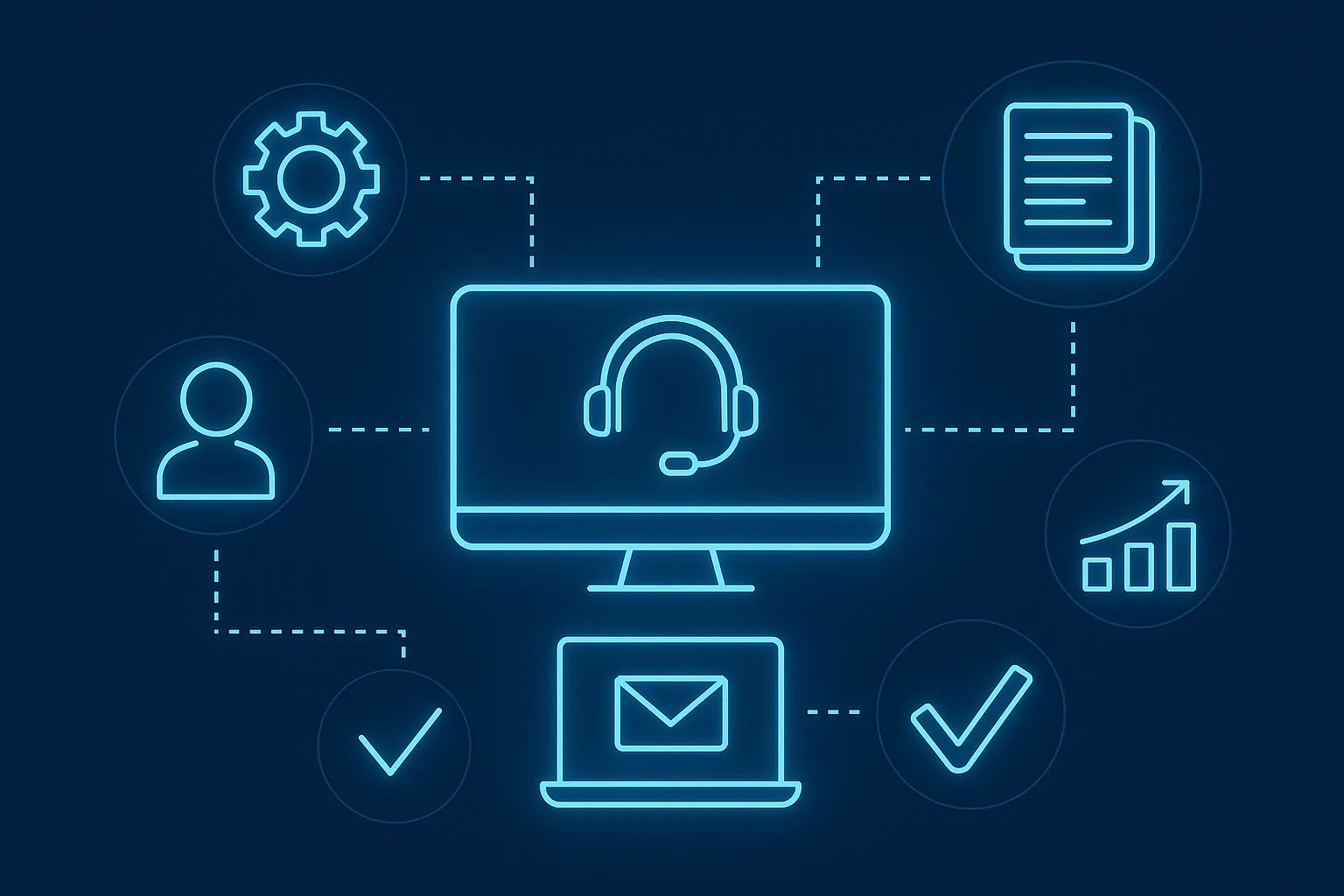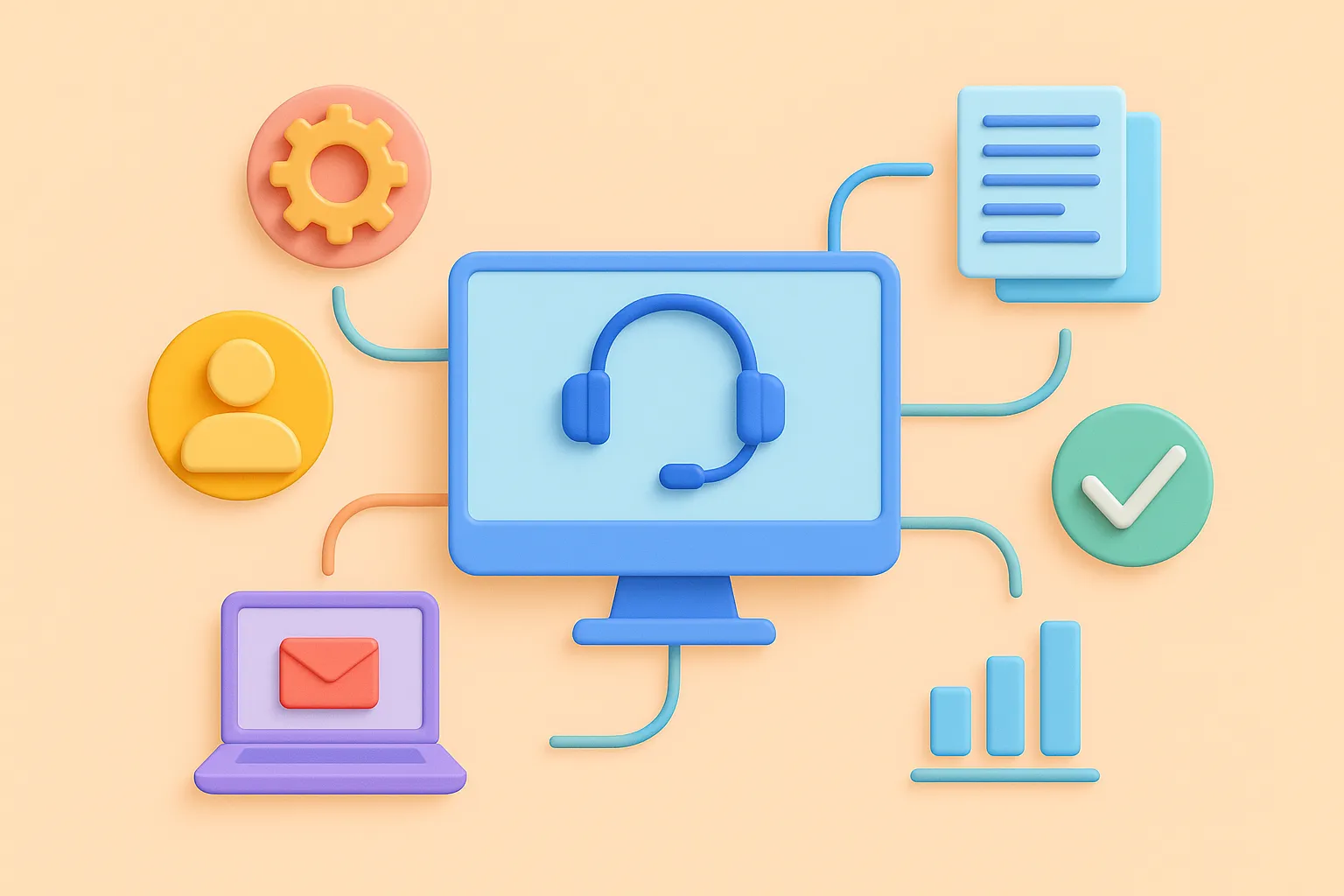July 10, 2025
July 10, 2025

Support isn’t just about solving problems, it’s about creating trust, consistency, and a seamless experience across every interaction. A Helpdesk does exactly that. It centralizes communication, simplifies issue tracking, and brings structure to chaos. Whether you're scaling fast or struggling with fragmented support processes, understanding how a Helpdesk works, and what it can truly offer is the first step to building a smarter, more responsive organization. This article explores the core definition of a Helpdesk, its business benefits, and the must-have features of a modern support solution.
A Helpdesk is a centralized support system designed to manage and resolve internal or external service requests efficiently. It serves as the frontline for handling inquiries, troubleshooting issues, and maintaining continuity across an organization’s technical and operational workflows.

At its core, a Helpdesk is more than just a tool for fixing problems. It’s a structured process that connects users with the right support resources at the right time. Whether it's an employee requesting access to software, a customer reporting a product malfunction, or a team escalating a network issue, the Helpdesk provides a consistent framework to capture, prioritize, and resolve each case with accountability.
What sets a Helpdesk apart is its ability to bring visibility and structure to what would otherwise be a chaotic stream of emails, calls, and ad-hoc conversations. Through ticketing systems, automated workflows, and knowledge bases, Helpdesks enable support teams to work proactively rather than reactively.
Helpdesks also play a strategic role. By collecting data on response times, ticket categories, and user satisfaction, they offer valuable insights into operational gaps and recurring pain points. This allows businesses not only to improve support but also to inform broader decisions around product, staffing, and infrastructure.
In short, a Helpdesk is the operational backbone of responsive support. It empowers teams to deliver faster resolutions, reduce downtime, and build stronger relationships with users both inside and outside the organization.
A Helpdesk is responsible for managing, organizing, and resolving support-related issues across an organization. Its core function is to act as the single point of contact between users whether customers, employees, or partners and the support team, ensuring that problems are handled quickly, consistently, and with minimal disruption.

Here’s what a Helpdesk typically does:
In essence, a Helpdesk bridges the gap between people and technology. It reduces friction, increases efficiency, and plays a critical role in keeping operations running smoothly especially in organizations that rely on digital infrastructure and 24/7 responsiveness.
A modern Helpdesk system does more than streamline technical support, it elevates the entire service experience, both for customers and internal users. By centralizing communication, automating processes, and providing actionable insights, a Helpdesk becomes a key driver of operational efficiency and user satisfaction.

1. Faster Response and Resolution Times
With a structured ticketing system in place, support teams can quickly identify, prioritize, and address issues. Automated workflows reduce delays by routing requests to the right people from the start. This leads to faster resolutions and fewer bottlenecks in day-to-day operations.
2. Improved Service Quality and Consistency
A Helpdesk ensures every request is handled through a standardized process. Whether it’s a minor inquiry or a critical issue, the system maintains consistency in how each case is tracked, escalated, and resolved. This results in a more reliable and professional service experience.
3. Better Communication and Transparency
Users are no longer left in the dark wondering what’s happening with their requests. Helpdesk systems provide real-time updates, status tracking, and clear communication channels, reducing confusion and building trust throughout the support journey.
4. Increased Productivity Across Teams
By removing repetitive manual tasks, a Helpdesk frees up time for support staff to focus on complex issues that require human judgment. Teams can collaborate more effectively, share knowledge, and reduce duplicated efforts leading to a more efficient support environment.
5. Actionable Insights Through Reporting
Built-in analytics and reporting tools allow managers to monitor performance metrics such as ticket volume, resolution time, user satisfaction, and SLA compliance. These insights help identify recurring issues, optimize workflows, and make data-driven decisions.
6. Enhanced Scalability and Adaptability
As businesses grow, so do their support needs. A Helpdesk system scales with your organization whether you're supporting five users or five thousand. With customizable workflows, multilingual capabilities, and integrations, it adapts to evolving demands without sacrificing performance.
7. Stronger Customer and Employee Relationships
By delivering consistent, timely support, a Helpdesk strengthens user trust. Whether you're serving external clients or internal teams, a reliable support system sends a clear message: their experience matters.
A modern Helpdesk is no longer just a basic ticketing tool. To truly empower support teams and meet user expectations, it must be intelligent, flexible, and fully integrated into business workflows. Below are the four essential feature pillars that define an effective Helpdesk system today.
Customers and employees no longer rely on a single channel to seek help. A modern Helpdesk must consolidate all communication channels such as email, live chat, phone, social media, and support portals into one centralized platform.
This ensures that support agents never miss a request, no matter where it comes from. It also creates a seamless experience for users, who can start a conversation on one channel and continue it on another without repeating themselves. Multichannel support is especially valuable for global businesses, where responsiveness across time zones and platforms is critical.
Manual handling of tickets can lead to delays, miscommunication, and human error. That’s why automation is a must. A modern Helpdesk should allow teams to set up intelligent workflows that automatically assign, escalate, or close tickets based on pre-defined conditions.
From auto-responders to SLA-based priority tagging, automation ensures that support is not only faster but also more accurate. It eliminates repetitive tasks, keeps service levels on track, and gives support teams more time to focus on complex or high-value issues.
Users often prefer finding answers themselves especially for simple or recurring questions. A Helpdesk equipped with a searchable knowledge base or FAQ center empowers users to resolve issues on their own, reducing the volume of incoming tickets.
For support teams, this means more time to deal with critical requests. It also helps build a long-term repository of solutions that grows with your organization. When paired with ticket suggestions based on user queries, self-service tools can dramatically increase efficiency and customer satisfaction.
Data is at the heart of effective service management. A modern Helpdesk should provide real-time dashboards and detailed reports covering ticket trends, resolution times, agent performance, SLA compliance, and customer feedback.
These insights allow managers to spot recurring issues, identify training needs, and adjust resource allocation proactively. More importantly, analytics turn the Helpdesk from a reactive support tool into a strategic asset capable of informing broader operational and customer experience decisions.
The best Helpdesk systems don’t just solve problems, they prevent them, optimize workflows, and deliver actionable insights. By combining multichannel support, automation, self-service, and data-driven reporting, a modern Helpdesk creates a support ecosystem that’s scalable, intelligent, and truly user-focused.
When choosing a Helpdesk platform or a managed Helpdesk service provider, it’s these core features that make the difference between short-term fixes and long-term success.
Building and managing an in-house Helpdesk can be time-consuming, resource-intensive, and difficult to scale especially when 24/7 availability, multilingual support, and high service standards are expected. That’s where Serdao comes in.

With over a decade of experience supporting organizations across the world, Serdao delivers fully managed Helpdesk and IT Support Services tailored to your business. Our teams operate around the clock, across time zones and languages, ensuring your users always receive timely, professional support.
Whether you need to extend your internal capabilities or outsource the entire support function, Serdao combines technical expertise, flexible processes, and a people-first mindset to help you create a service experience that scales with your ambition.
Conclusion
A well-designed Helpdesk is more than a technical solution, it’s the backbone of responsive, scalable support. From improving resolution times and ensuring service consistency to providing strategic insights, the right Helpdesk system brings structure and clarity to every interaction.
Whether you're building internal IT support or delivering customer-facing services, investing in a modern Helpdesk is a step toward greater efficiency, accountability, and user satisfaction. And for organizations seeking a flexible, reliable partner to manage that process end-to-end, services like Serdao offer both the experience and infrastructure to make it work.